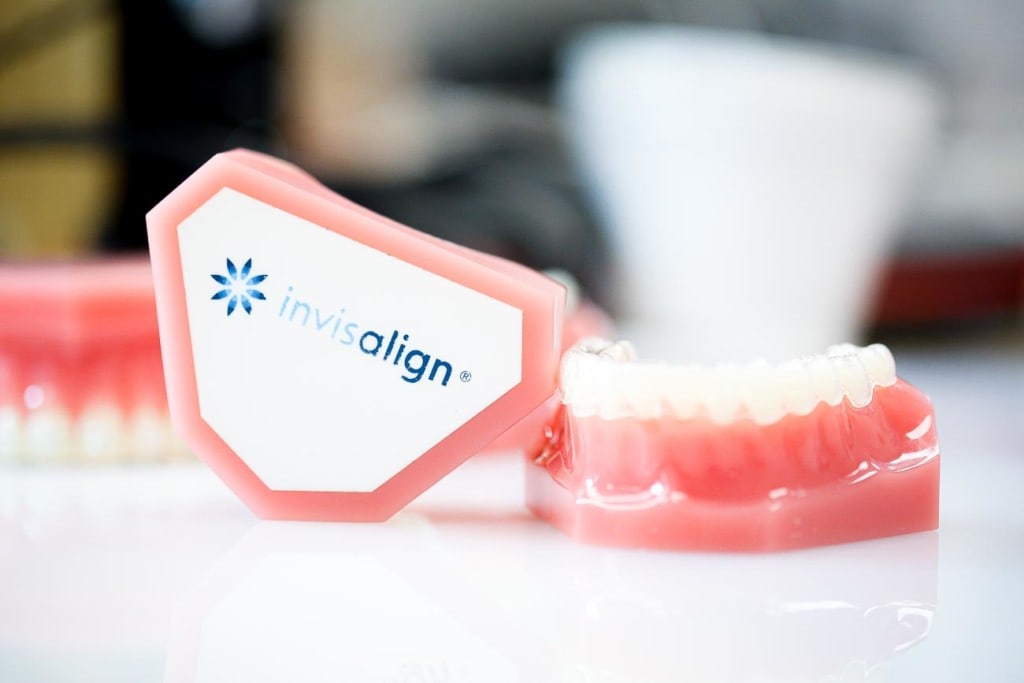You’ve probably heard about wearing rubber bands with braces, but did you know rubber bands work with Invisalign clear aligners as well? Invisalign clear aligners work much as braces do. They use gentle pressure to move your teeth into their proper positions.
Today’s Invisalign doesn’t just move your teeth. It can also fix crossbites, which is when the upper teeth sit inside the lower ones instead of sitting just outside of them. Rubber bands help to fix these crossbites.
Wilson & Hendrickson Orthodontics uses all the tools available to create your perfect smile. That includes using rubber bands with Invisalign.
How do these work? They use buttons on your Invisalign. What are buttons, and how do they work with rubber bands? As a Diamond Top 1% Provider of Invisalign in Topeka, KS, we have all the answers you need.
What Are Buttons on Invisalign?
In order to use elastics with Invisalign, you need to have buttons on your clear aligners. These buttons are little, round attachments on the outside of the Invisalign trays. They are made to hold rubber bands in the same way small hooks on braces brackets hold rubber bands. Most of the time, the rubber bands are stretched from a button at the front of the mouth to a button on the back.
You may not get buttons on your Invisalign right away because you may not need rubber bands immediately. Often, Invisalign bands come in later during treatment when the teeth are straight enough to begin concentrating on repairing the bite rather than straightening the teeth. That’s when rubber bands come into play.
What Do Rubber Bands Do for Invisalign?
Rubber bands work for Invisalign the same way they work for braces. You may require attachments to repair a bad bite, such as a crossbite, open bite, underbite, or an overbite. There are three classifications of rubber bands.
- Class 1 elastics: These close the gaps between your teeth and run from the upper first or second molar to the upper cuspid (canine).
- Class 2 elastics: These reduce an overbite or overjet by pulling the upper teeth back and moving the lower teeth forward.
- Class 3 elastics: These fix an underbite by pulling the bottom teeth backward while moving the upper teeth forward.
You may get different rubber bands at different times, or you may get more than one set of rubber bands at a time, depending on your treatment plan. When you get rubber bands at Wilson & Hendrickson Orthodontics, we’ll show you how to place your Invisalign elastics and let you know how long you should wear them.
We may have you wear the rubber bands through only a few sets of Invisalign trays, or you may wear them longer. It all depends on how bad your bite is and how much we have to repair. Rest assured, we’ll have the right plan for your perfect smile!
Are Rubber Bands Safe?
The rubber bands we provide are safe to use because they are made of a non-toxic material. That means you’ll be OK if you accidentally swallow one — just don’t make a habit of it! If you are allergic to latex, we have alternatives for you that will be safe for you to use. Just ask us!
You’ll want to remove your rubber bands when you eat or brush your teeth. Do NOT reuse your rubber bands. Discard the old ones and put fresh ones in after you put your rinsed Invisalign trays back into your mouth after eating. Otherwise, you’ll like wear your rubber bands the entire time you’re wearing your Invisalign, which means at least 22 hours a day.
Cleaning Your Invisalign With Rubber Bands
It’s incredibly important to brush and floss your teeth regularly anytime, especially throughout your treatment. Your Invisalign can trap plaque and bacteria against your teeth, accelerating tooth decay. Brushing and flossing eliminates the plaque and bacteria that can cause cavities.
It’s also vital that you keep your Invisalign trays clean during your treatment for the same reasons. Plaque and bacteria can build up in the tray and get onto your teeth. It can also discolor your Invisalign aligners over time.
Clean your Invisalign by rinsing them well. You can soak them in a solution of lukewarm water and Invisalign cleaning tablets, which you can find at most major retailers.
Some people use denture cleansers, but be careful! Make sure you get ones with no abrasives in them. Abrasives can cause micro-scratches on your aligner trays and cause them to look cloudy. The same goes for using toothpaste with a toothbrush.
Discard your old rubber bands and clean the buttons of your Invisalign trays to ensure no food particles are left around them. If you need to clean around the buttons well, use a soft-bristled toothbrush with water or a soft washcloth. You can also soak your trays in a solution of water and baking soda or water and vinegar for no more than 30 minutes. Then, rinse your trays and put them in your mouth or a proper storage container.
It’s always important to brush and floss regularly, but it’s especially important through orthodontic treatment, particularly with Invisalign attachments. That’s because a lack of good oral hygiene can cause demineralization in your enamel, the hard outer shell of your tooth. When that happens, it usually results in white spots on your teeth that will show up when the attachments are removed from your teeth. We don’t want that!
Be sure to brush and floss your teeth at least twice a day for two minutes each time. Ideally, you need to brush after every meal before you put your Invisalign trays back into your mouth. Be sure to brush with a good fluoride toothpaste, and brush well around your attachments. We recommend an electric toothbrush because the spinning or vibrating head tends to scrub away more plaque than a manual toothbrush.
Your attachments are made to match your tooth and be stain-resistant, but poor oral hygiene could result in staining of the attachments. That will make them much more noticeable.
Invisalign Treatment in Topeka, KS
Wilson & Hendrickson Orthodontics provides Invisalign and Invisalign accessories to patients in the Topeka, KS, and Seneca, KS, areas. If you want to create a new smile with Invisalign, schedule an appointment with us. Let us show you what Invisalign and rubber bands with Invisalign can do for you!











